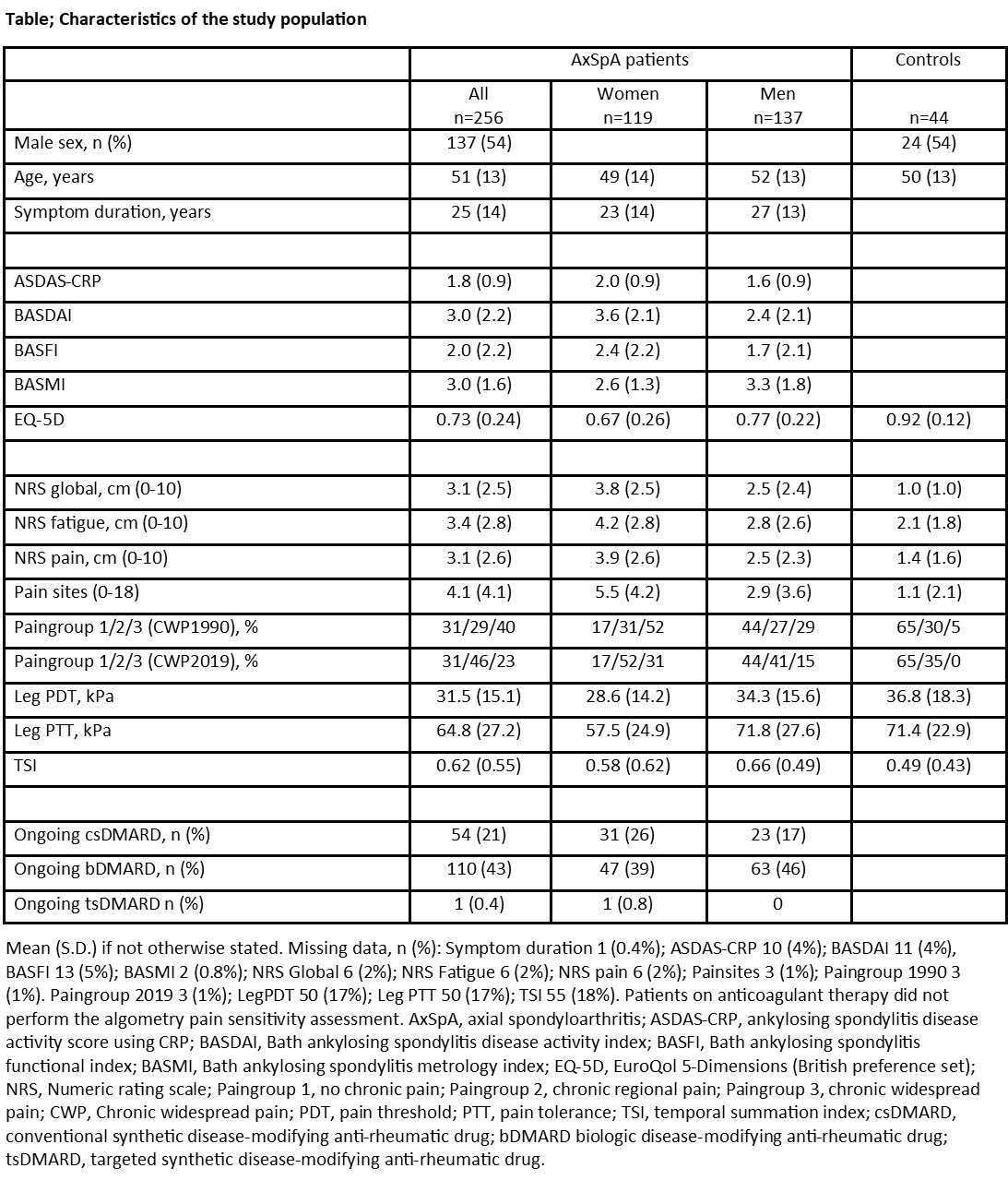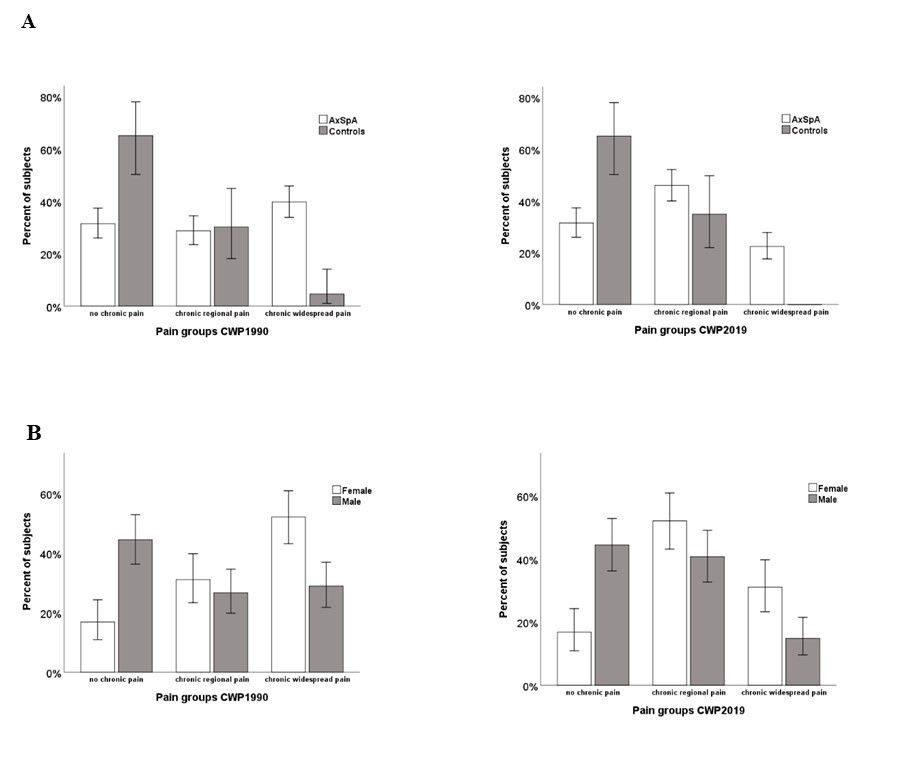Session Information
Session Type: Poster Session A
Session Time: 8:30AM-10:30AM
Background/Purpose: Chronic widespread pain (CWP) is common in axial spondyloarthritis (axSpA). For ankylosing spondylitis (AS) and non-radiographic axSpA (nr-axSpA) patients, no differences were found in pain measures, including algometry-assessed pain sensitivity (1), while comparisons versus controls and regarding sex were not reported. The current study aimed to assess differences in pain sensitivity in patients and controls, women and men, and between patients with and without CWP, using different CWP definitions.
Methods: We studied 172 patients with AS/radiographic axSpA and 84 patients with nr-axSpA (modified New York/ASAS criteria) from a well-characterized cohort (2), and 44 controls, frequency-matched for age and sex. All subjects were assessed for pain sensitivity (pain threshold, pain tolerance and temporal summation of pain) by computerized cuff pressure algometry (3), and reported pain intensity, duration, and distribution. The participants were categorized by a mannequin (18 pain sites) (4) into CWP, chronic regional pain or no chronic pain according to the CWP assessment of the 1990 fibromyalgia criteria (CWP1990) and with the novel 2019 CWP criteria (CWP2019) mannequin adopted to 15 pain sites by excluding the chest and adding knees to upper legs (5). Comparisons between patients and controls, women and men, and pain groups defined by CWP1990 and CWP2019 using Student’s t-test/Chi-square test, as appropriate.
Results: Characteristics for patients and controls are presented in the Table. Comparisons between patients and controls showed no differences in pain sensitivity measures except a trend (p=0.056) towards lower pain threshold for axSpA patients. The patients reported significantly higher pain intensity and more painful sites than controls (≤0.001).
Women with axSpA, reported lower pain threshold and tolerance, higher pain intensity, and more painful sites than men (all p≤0.01). More women also reported CWP than men (CWP1990; 52% vs. 29%/CWP2019; 31% vs. 15%) (Figure 1), but with no difference in pain sensitivity for men and women who reported CWP, irrespective of CWP definition.
A larger group of the axSpA patients reported CWP according to CWP1990 than controls (40% vs. 5%) while 22% of the axSpA patients and none of the controls reported CWP according to CWP2019 (Figure 1). Patients with CWP2019 had lower pain threshold and tolerance, while patients with CWP1990 only had lower pain tolerance than patients without chronic pain (Figure 2). For temporal summation no differences between any of the groups were found.
Conclusion: Chronic widespread pain is more common in axSpA patients than controls and in women compared to men, irrespective of CWP definition. Despite this, men and women with axSpA and concomitant CWP express similar levels of pain sensitivity. The CWP2019 definition identified a smaller group of patients with high pain sensitivity than CWP1990. CWP2019 may therefore be more accurate in identifying patients with more severe chronic pain.
References:
1 Mogard. J Rheumatol. 2020, dec 15
2 Olofsson. Rheumatology. 2019;58:1176-87
3 Polianskis. Eur J Pain. 2001;5:267-77
4 Bergman. J Rheumatol. 2001;28:1369-77
5 Wolfe. Scand J Pain. 2020;20:77-86
Error bars with 95% CI (all p≤0.001).
To cite this abstract in AMA style:
Lindqvist E, Olofsson T, Bergman S, Bremander A, Geijer M, Kristensen L, Kvistgaard Olsen J, Sagard J, Karlsson Wallman J, Mogard E. Pain Sensitivity in Axial Spondyloarthritis – Comparisons Between Patients and Controls, Women and Men, and Between Different Pain Groups [abstract]. Arthritis Rheumatol. 2021; 73 (suppl 9). https://acrabstracts.org/abstract/pain-sensitivity-in-axial-spondyloarthritis-comparisons-between-patients-and-controls-women-and-men-and-between-different-pain-groups/. Accessed .« Back to ACR Convergence 2021
ACR Meeting Abstracts - https://acrabstracts.org/abstract/pain-sensitivity-in-axial-spondyloarthritis-comparisons-between-patients-and-controls-women-and-men-and-between-different-pain-groups/



